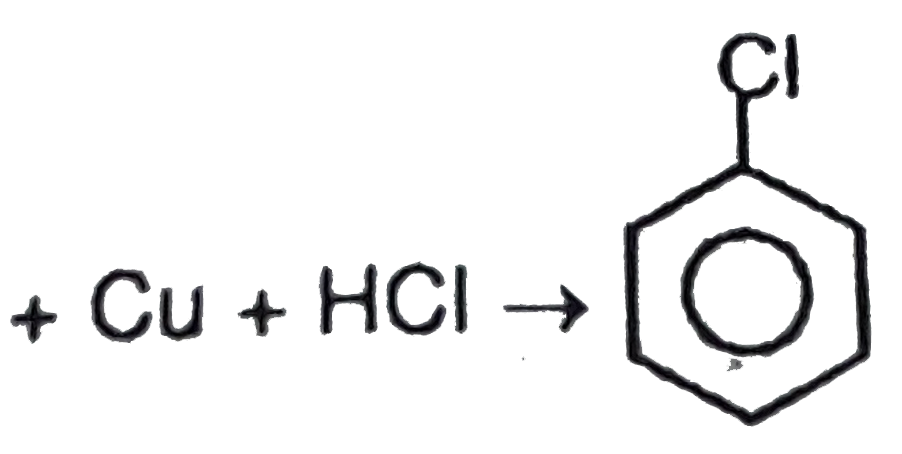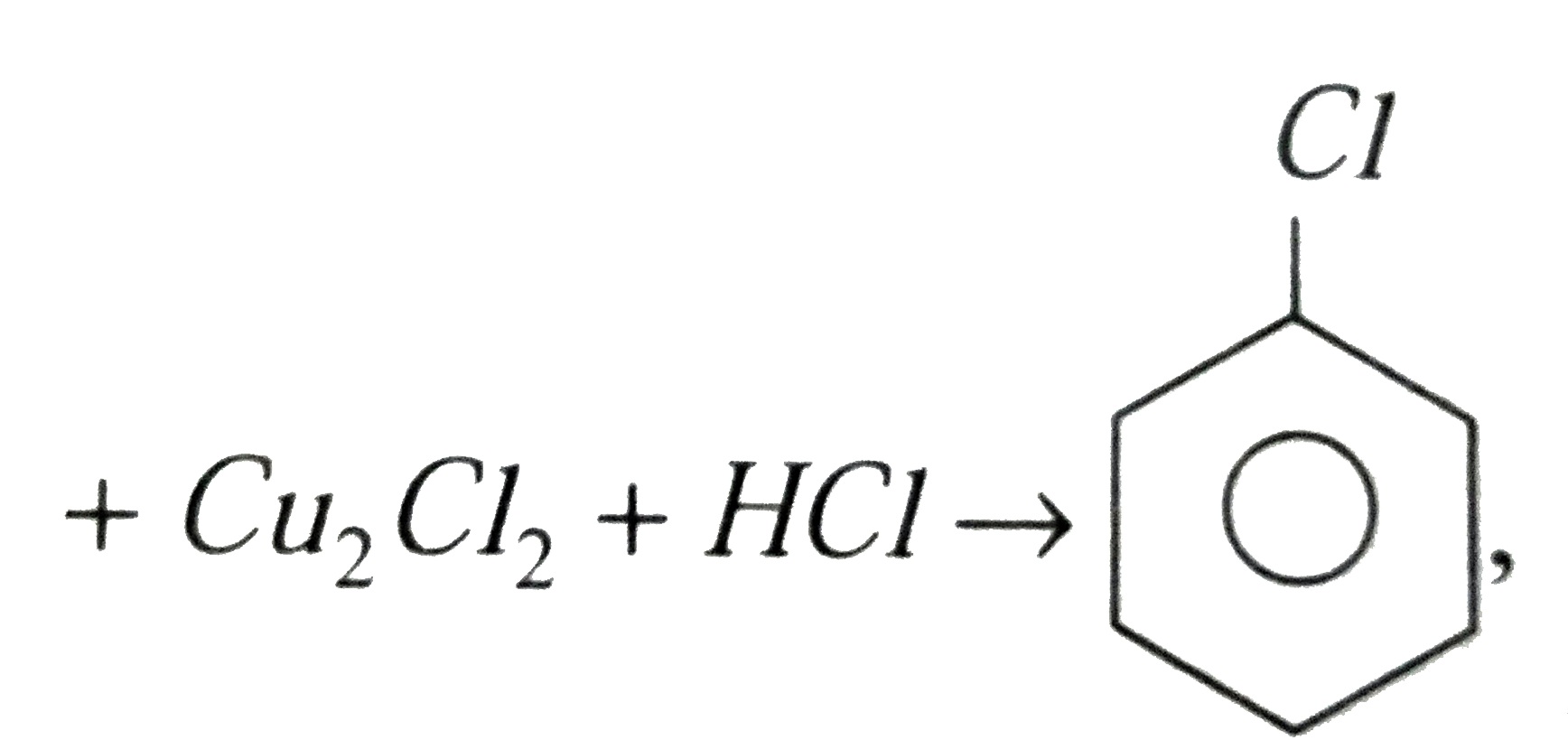Diazonium salt  , the reaction is known as
, the reaction is known as
Chlorination
Sandmeyer's reaction
Perkin reaction
Gattermann reaction
The correct Answer is:D
Step by step video, text & image solution for Diazonium salt , the reaction is known as by Chemistry experts to help you in doubts & scoring excellent marks in Class 12 exams.
Topper's Solved these Questions
- BOOK - RESONANCECHAPTER - AROMATIC COMPOUNDSEXERCISE - Part - III Match the column3videos
AROMATIC COMPOUNDS
- BOOK - RESONANCECHAPTER - AROMATIC COMPOUNDSEXERCISE - Exercise -2 (Part-I Only one option correct type)12videos
AROMATIC COMPOUNDS
- BOOK - RESONANCECHAPTER - AROMATIC COMPOUNDSEXERCISE - Part - III Practice Test-221videos
AROMATIC COMPOUNDS
- BOOK - RESONANCECHAPTER - ALKYL HALIDE, ALCOHOL, PHENOL, ETHEREXERCISE - ORGANIC CHEMISTRY(Alkyl Halide, Alcohol,Phenol,Ether)56videos
ALKYL HALIDE, ALCOHOL, PHENOL, ETHER
- BOOK - RESONANCECHAPTER - BASIC CONCEPTSEXERCISE - ORGANIC CHEMISTRY(BASIC CONCEPTS)27videos
BASIC CONCEPTS
Similar Questions
Knowledge Check
- Question 1 - Select One
Diazonium salts are the reaction products between nitrous acid and
Aprimary aliphatic amineBN-alkyl substituted aromatic aminesCprimary aromatic aininesDsecondary amines. - Question 2 - Select One
Diazoium salt + Cu + HCl to
 , the reaction is known asAChlorinationBSandmeyer's reactionCPerkin reactionDGattermann reaction
, the reaction is known asAChlorinationBSandmeyer's reactionCPerkin reactionDGattermann reaction - Question 3 - Select One
The diazonium salts are the reaction products in presence of excess of mineral acid with nitrous acid and
APrimary aliphatic amineBsecondary aromatic amineCprimary aromatic amineDTertiary aliphatic amine
Acid + Base → Salt + Water. This reaction is known as
View SolutionA diazonium salt reacts with a phenol to give an azo dye. This reaction is known as
View SolutionNylon salt on heating gives nylon -66 . The reaction is known as
View SolutionDiazonium salt formation and coupling reaction: When a reaction mixture of phenyl amine and nitrous acid is kept below 10∘C, a diazonium salt is formed. This reaction is called diazotization reaction.
_E01_891_Q01.png)
The diazonium ion, −N+2, is rather unstable and decomposes readily to nitrogen. However, delocalization of the diazonium from π−bond electron over a benzene ring phenyl diazonium sufficiently for it to form at low temperature. The phenyl diazonium ion behaves as an electrophile, and will attack another arene molecule such as phenol. Electrophilic subsitiution takes at the 4 position, producing 4-hydroxy phenyl azobenzene. The reaction is known as coupling reaction.
_E01_891_Q02.png)
The compound formed is an energetically stable, yellow azo dye (the azo group is −N=N−) The stability is due to extensive delocalisation of electrons via the nitrogen- nitrogen double bonds.
The azo dye obtained on reacting 4-aminophenol with nitrous acid (in dilute hydrochloric acid) below 10∘C and coupling the resulting diazonium salt with phenol is :View SolutionDiazonium salt formation and coupling reaction: When a reaction mixture of phenyl amine and nitrous acid is kept below 10∘C, a diazonium salt is formed. This reaction is called diazotization reaction.
_E01_892_Q01.png)
The diazonium ion, −N+2, is rather unstable and decomposes readily to nitrogen. However, delocalization of the diazonium from π−bond electron over a benzene ring phenyl diazonium sufficiently for it to form at low temperature. The phenyl diazonium ion behaves as an electrophile, and will attack another arene molecule such as phenol. Electrophilic subsitiution takes at the 4 position, producing 4-hydroxy phenyl azobenzene. The reaction is known as coupling reaction.
_E01_892_Q02.png)
The compound formed is an energetically stable, yellow azo dye (the azo group is −N=N−) The stability is due to extensive delocalisation of electrons via the nitrogen- nitrogen double bonds.
Benzene diazonium chloride on reaction with phenol in weakly basic medium gives :View Solution


 , the reaction is known as
, the reaction is known as